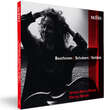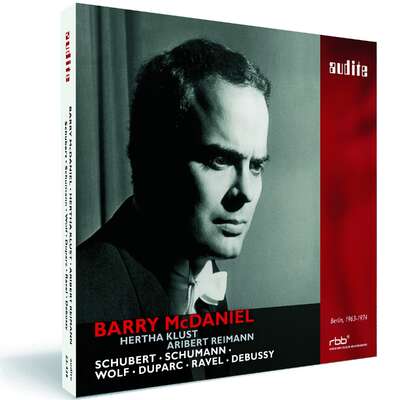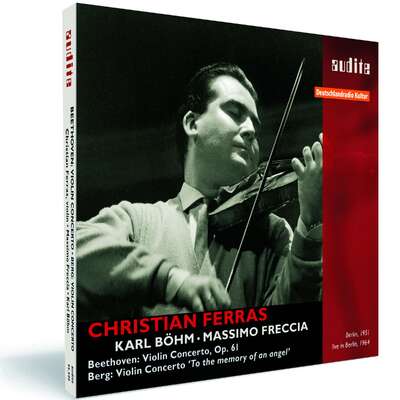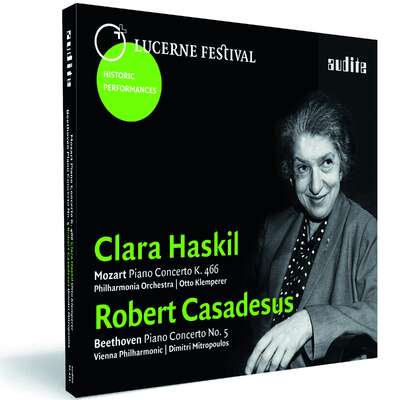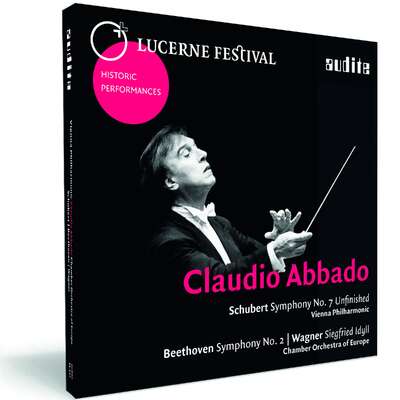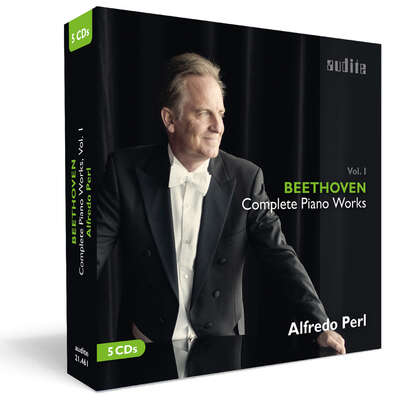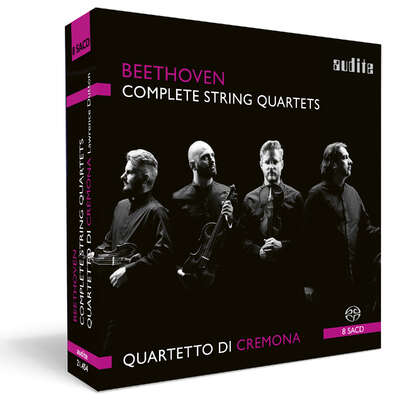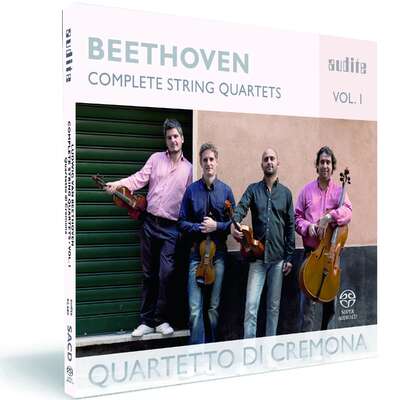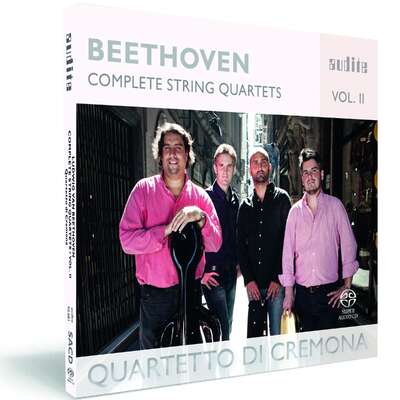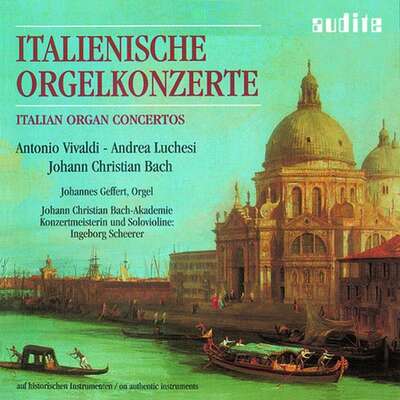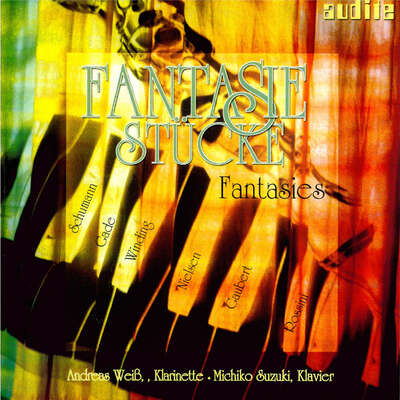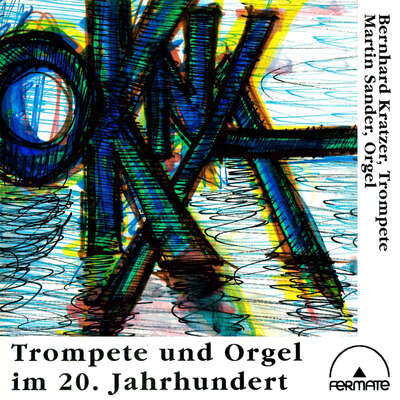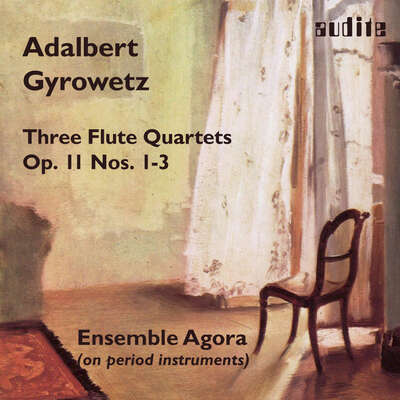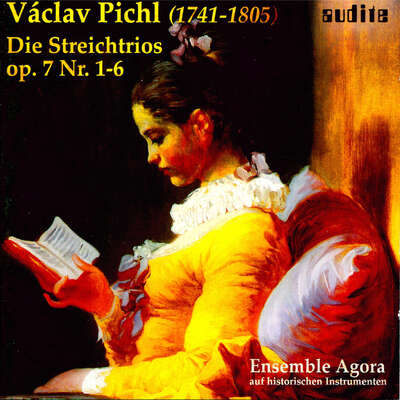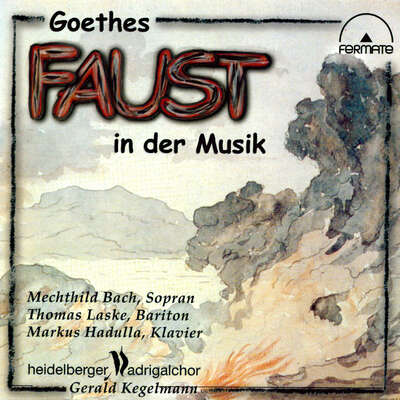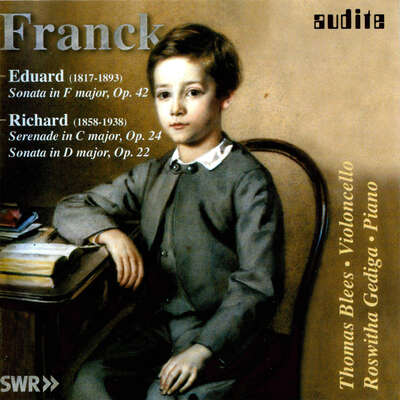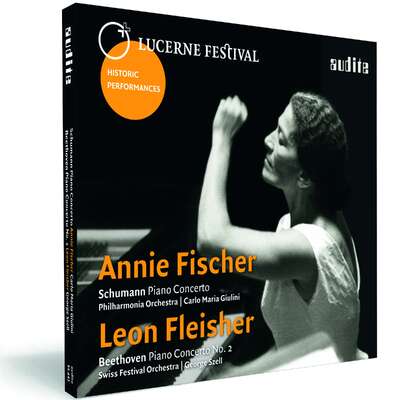
Musical individuality rather than symbiotic fusion: on historical instruments, but with the greatest expressive freedom, the musical details of Beethoven, Schubert, and Voříšek's works from early-nineteenth-century Vienna speak directly to the listener.more
"[...] mit ihrem kantablen und farbkräftigen Spiel beweist [Ursina Maria Braun], wie nahe das Cello der menschlichen Stimme kommen kann. Hausmusik – aber auf höchstem künstlerischen Niveau." (Concerti)
Details
| Beethoven – Schubert – Voříšek: Works for Cello and Fortepiano | |
| article number: | 97.829 |
|---|---|
| EAN barcode: | 4022143978295 |
| price group: | BCA |
| release date: | 7. March 2025 |
| total time: | 68 min. |
Bonus Material
Informationen
In the early nineteenth century, the house concert was the most common form of musical performance in Vienna. Professionals featured alongside aristocratic music lovers and ambitious bourgeois amateur musicians, and composers presented their works. While Beethoven's admirers were largely counted among the Austrian and Bohemian nobility, Schubert's circle tended to consist of literati, artists, and state officials who saw the salon as a protected space where both aesthetic and political debates could be held.
Reviews
The Strad | 16 May 2025 | Robin Stowell | May 16, 2025 | source: https://www.thes... An imaginary Viennese salon concert proves a mixed affair
Braun’s upper-register playing and well-shaped lines are impressive [...], as is also this duo’s faithful negotiation of the work’s abrupt shifts of dynamics, mood and texture. [...] Audite’s sonics are clear, spacious and natural.Mehr lesen
SRF2 Kultur | "CH-Musik", 11.05.2025, 14 Uhr | Valerio Benz | May 11, 2025 | source: https://www.srf.... BROADCAST: Ursina Maria Braun im Originalklang-Gewitter
Die Schweizer Cellistin Ursina Maria Braun bietet auf ihrer aktuellen CD neue Hörerfahrungen auf.<br /> Nicht dass die hier eingespielte Musik vonMehr lesen
Nicht dass die hier eingespielte Musik von Beethoven, Schubert und Vorisek eine Überraschung wäre, nein, es ist ihr erdiger, zupackender und zuweilen rauher Zugriff darauf, ihr mit Darmsaiten bespanntes Cello, und der im Gegensatz dazu etwas zerbrechlich wirkende, aber stets transparente Klang des von Florian Birsak gespielten Hammerflügels.
Nicht dass die hier eingespielte Musik von
concerti - Das Konzert- und Opernmagazin | 16. April 2025 | Frank Armbruster | April 16, 2025 | source: https://www.conc... Hausmusik
[...] mit ihrem kantablen und farbkräftigen Spiel beweist [Ursina Maria Braun], wie nahe das Cello der menschlichen Stimme kommen kann. Gleichermaßen ausdifferenziert gestaltet die historisch informiert spielende, vielfach preisgekrönte Cellistin mit ihrem Kompagnon am Hammerflügel Florian Birsak die Cellowerke von Beethoven und dessen Zeitgenossen Voříšek – letztere übrigens eine echte Entdeckung. Hausmusik – aber auf höchstem künstlerischen Niveau.Mehr lesen
Rondo | 15.03.2025 | Manuel Brug | March 15, 2025 | source: https://www.rond...
Eine Klangreise ins frühe 19. Jahrhundert wird hier versprochen und auch gleich eingelöst. [...] Mit viel Freude, unmittelbarer Reaktion, ohne allzu blanke Politur. Mehr lesen
www.pizzicato.lu | 13/03/2025 | Remy Franck | March 13, 2025 | source: https://www.pizz... Inspiriert und inspirierend
Wenn Ursina Maria Braun am Cello und ihr Klavierpartner Florian Birsak auf der Fortepiano-Kopie eines Jakob Bertsche-Instruments von ca. 1810 ihrMehr lesen
Nun mag es einfacher sein, in diesem Stück oder in der Taubenpost aus Schuberts Schwanengesang narrative Interpretationen zu reüssieren als in Jan Hugo Voriseks Variationen für Cello & Klavier op. 9, wo das Narrative erst erfunden werden muss. Doch auch das gelingt den Interpreten mit einem fast schalkhaften Musizieren voller spontaner Einfälle, die einen schmunzeln, wenn nicht gar glucksen lassen.
Zu einem derart einfallsreichen Interpretieren eignet sich auch Beethovens 3. Cellosonate mit ihren vielen zigeunerhaften Themen und den verblüffenden rhythmischen Verschiebungen sehr gut. Die extrovertierte Musik mit ihren kühnen Kontrasten ist beim Duo Braun-Birsak in guten Händen.
English Translation:
When Ursina Maria Braun on cello and her piano partner Florian Birsak on a fortepiano copy of a Jakob Bertsche instrument from around 1810 begin their program with Beethoven’s Variations ‘Bei Männer welche Liebe fühlen’, the listener is immediately delighted, for the two play so imaginatively and inspired, so communicatively and rhetorically, that one is spellbound.
Now, in this piece, or in the Dove Post from Schubert’s Schwanengesang, it may be easier to succeed in a narrative interpretation than in Jan Hugo Vorisek’s Variations for Cello & Piano op. 9, where the narrative has to be invented. But even here the performers succeed with almost mischievous music-making, full of spontaneous ideas that make you smile, if not laugh.
Beethoven’s 3rd Cello Sonata, with its many gypsy themes and astonishing rhythmic shifts, also lends itself well to such imaginative interpretations. This extroverted music with its bold contrasts is in good hands with the Braun-Birsak Duo.
De Gelderlander | 08-02-25 | Maarten-Jan Dongelmans | February 8, 2025 | source: https://www.geld... Spetterende Beethoven dankzij regelmatige clash tussen knorrende cello en tintelende fortepiano
Het resultaat isinnemend en vooral verbluffend. [...] Aan de hand van een uitgekiendprogramma met Beethoven, Schubert enVorísek maken Braun en Birsakzonneklaar dat de vitaliteit van toen anno2025 nog niets aan intensiteit heeftingeboet. Belangrijk onderdeel daarbij ishet speelplezier van het duo.Mehr lesen
